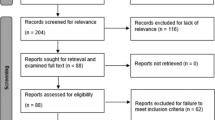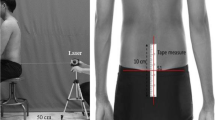Abstract
Study Design
Prospectively enrolled AIS patients who underwent spinal fusion, with 2 year follow-up.
Objectives
To evaluate the cardiovascular fitness and activity level in patients with AIS pre— and post–spinal fusion and to determine if initial curve magnitude or pulmonary function is predictive of exercise capacity.
Summary of Background Data
Researchers have tried to link pulmonary function testing (PFT) to exercise capacity; the results are mixed. Some report no improvement in PFTs or aerobic activity after surgical correction, and PFT measures were not predictive of exercise capacity. Conflicting results have shown Vo 2max results to fall within normal range in AIS patients while PFTs show minimal impairment.
Methods
AIS patients underwent PFT and oxygen consumption (VO 2) testing during a submaximal graded exercise test (GXT) pre— and post–spinal fusion. Vo 2max was predicted in those patients who completed the test to 85% of maximal heart rate. Pre- to postoperative changes were assessed and then compared to age-matched control subjects. Correlations between Vo 2max and curve severity, pulmonary function, and activity level were assessed.
Results
Thirty-seven patients participated. Vo 2max was predicted in 23 patients pre- and postoperation. There was a significant reduction in Vo 2max postfusion (39.5 ± 6.5 mL/kg/min vs 42.1 ± 8.1 mL/kg/min, p =.033); however, compared with controls (40.5 ± 6.5 mL/kg/min), all data were within the normal range (p >.05). AIS patients reporting high activity had significantly greater Vo 2max than those reporting low activity both pre and postoperatively, but this difference only met statistical significance preop (p <.05). Curve magnitude and PFT measures were not found to correlate with Vo 2max (p >.05).
Conclusions
Vo 2max in patients with AIS is within normal range both pre- and postfusion. Pulmonary limitations are accommodated for with a slightly increased breathing rate and a slightly reduced overall workload. Activity level rather than curve severity affects Vo 2max outcomes following fusion in AIS.
Similar content being viewed by others
References
Nachemson A. A long term follow-up study of non-treated scoliosis. Acta Orthop Scand 1968;39:466–76.
Mankin HJ, Graham JJ, Schack J. Cardiopulmonary function in mild and moderate idiopathic scoliosis. J Bone Joint Surg Am 1964;46:53–62.
Zhang JG, Wang W, Qiu GX, et al. The role of preoperative pulmonary function tests in the surgical treatment of scoliosis. Spine (Phila Pa 1976) 2005;30:218–21.
Graham EJ, Lenke LG, Lowe TG, et al. Prospective pulmonary function evaluation following open thoracotomy for anterior spinal fusion in adolescent idiopathic scoliosis. Spine (Phila Pa 1976) 2000;25:2319–25.
Kearon C, Viviani GR, Kirkley A, et al. Factors determining pulmonary function in adolescent idiopathic thoracic scoliosis. Am Rev Respir Dis 1993;148:288–94.
Kinnear WJ, Johnston ID. Does Harrington instrumentation improve pulmonary function in adolescents with idiopathic scoliosis? A meta-analysis. Spine (Phila Pa 1976) 1993;18:1556–9.
Newton PO, Perry A, Bastrom TP, et al. Predictors of change in postoperative pulmonary function in adolescent idiopathic scoliosis: a prospective study of 254 patients. Spine (Phila Pa 1976) 2007;32:1875–82.
Vedantam R, Crawford AH. The role of preoperative pulmonary function tests in patients with adolescent idiopathic scoliosis undergoing posterior spinal fusion. Spine (Phila Pa 1976) 1997;22:2731–4.
Verma K, Lonner BS, Kean KE, et al. Maximal pulmonary recovery after spinal fusion for adolescent idiopathic scoliosis: how do anterior approaches compare? Spine (Phila Pa 1976) 2011;36:1086–95.
Wong CA, Cole AA, Watson L, et al. Pulmonary function before and after anterior spinal surgery in adult idiopathic scoliosis. Thorax 1996;51:534–6.
Chong KC, Letts RM, Cumming GR. American Thoracic Society—Textbook of Respiratory Medicine 2000. Influence of spinal curvature on exercise capacity. J Pediatr Orthop 1981;1:251–4.
Lenke LG, White DK, Kemp JS, et al. Evaluation of ventilatory efficiency during exercise in patients with idiopathic scoliosis undergoing spinal fusion. Spine (Phila Pa 1976) 2002;27:2041–5.
Sperandio EF, Alexandre AS, Yi LC, et al. Functional aerobic exercise capacity limitation in adolescent idiopathic scoliosis. Spine J 2014;14:2366–72.
Barrios C, Pérez-Encinas C, Maruenda JI, et al. Significant ventilatory functional restriction in adolescents with mild or moderate scoliosis during maximal exercise tolerance test. Spine (Phila Pa 1976) 2005;30:1610–5.
Kesten S, Garfinkel SK, Wright T, et al. Impaired exercise capacity in adults with moderate scoliosis. Chest 1991;99:663–6.
Shneerson JM. Cardiac and respiratory responses to exercise in adolescent idiopathic scoliosis. Thorax 1980;35:347–50.
Kearon C, Viviani GR, Killian KJ. Factors influencing work capacity in adolescent idiopathic thoracic scoliosis. Am Rev Respir Dis 1993;148:295–303.
Smyth RJ, Chapman KR, Wright TA, et al. Pulmonary function in adolescents with mild idiopathic scoliosis. Thorax 1984;39:901–4.
Fabricant PD, Admoni S, Green DW, et al. Return to athletic activity after posterior spinal fusion for adolescent idiopathic scoliosis: analysis of independent predictors. J Pediatr Orthop 2012;32:259–65.
Aaron DJ, Storti KL, Robertson RJ, et al. Longitudinal study of the number and choice of leisure time physical activities from mid to late adolescence: implications for school curricula and community recreation programs. Arch Pediatr Adolesc Med 2002;156:1075–80.
Pate RR, Dowda M, O’Neill JR, et al. Change in physical activity participation among adolescent girls from 8th to 12th grade. J Phys Act Health 2007;4:3–16.
Powers SK, Howley ET. Exercise physiology: theory and application to fitness and performance. 3rd ed. Dubuque, IA: Brown and Benchmark; 1997.
Muirhead A, Conner AN. The assessment of lung function in children with scoliosis. J Bone Joint Surg Am 1985;67–B:699–702.
Roaf R. Vertebral growth and its mechanical control. J Bone Joint Surg Am 1960;42–B:40–59.
Washington RL, Brinker T, Alpert BS, et al. Guidelines for Exercise Testing in the Pediatric Age Group. From the Committee on Atherosclerosis and Hypertension in Children, Council on Cardiovascular Disease in the Young, the American Heart Association. Circulation 1994;90:2166–79.
The Physical Fitness Specialist Certification Manual, The Cooper Institute for Aerobics Research, Dallas TX, revised 1997, printed in Advanced Fitness Assessment & Exercise Prescription, 3rd edition, Vivian H. Heyward 1998. p. 48.
Author information
Authors and Affiliations
Corresponding author
Additional information
Author disclosures: none.
Rights and permissions
About this article
Cite this article
Jeans, K.A., Lovejoy, J.F., Karol, L.A. et al. How Is Pulmonary Function and Exercise Tolerance Affected in Patients With AIS Who Have Undergone Spinal Fusion?. Spine Deform 5, 416–423 (2017). https://doi.org/10.1016/j.jspd.2017.04.001
Received:
Revised:
Accepted:
Published:
Issue Date:
DOI: https://doi.org/10.1016/j.jspd.2017.04.001




